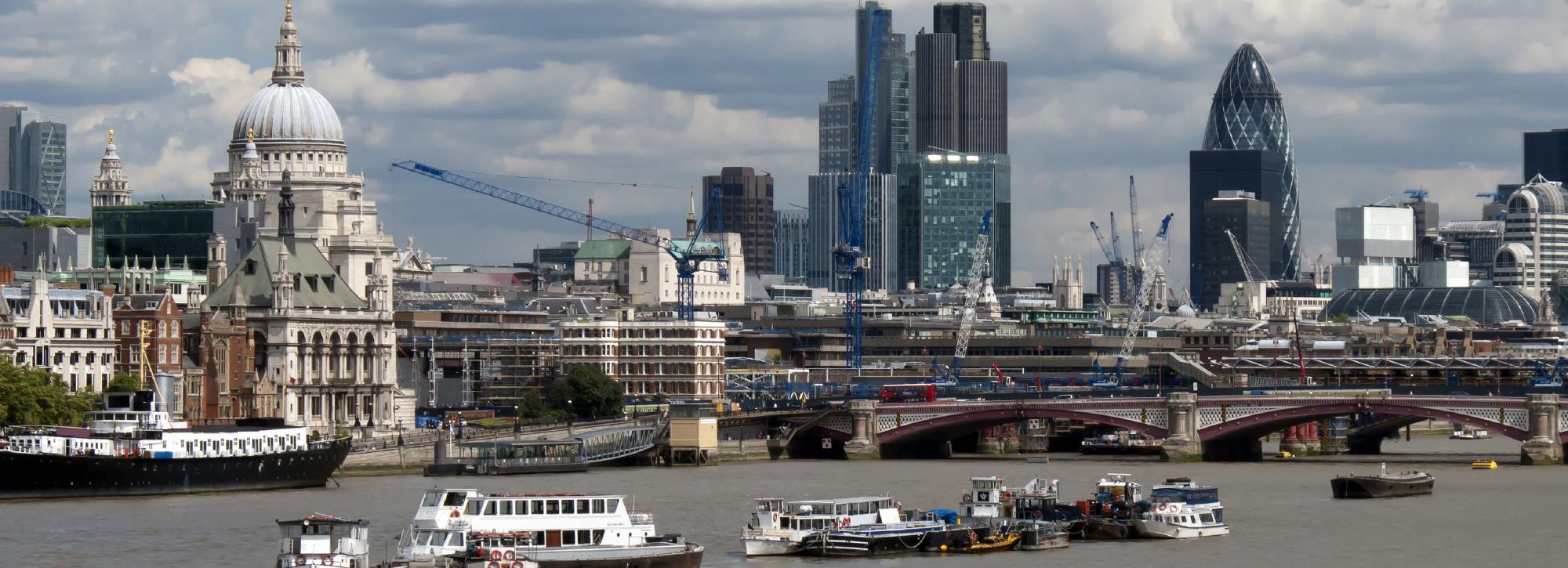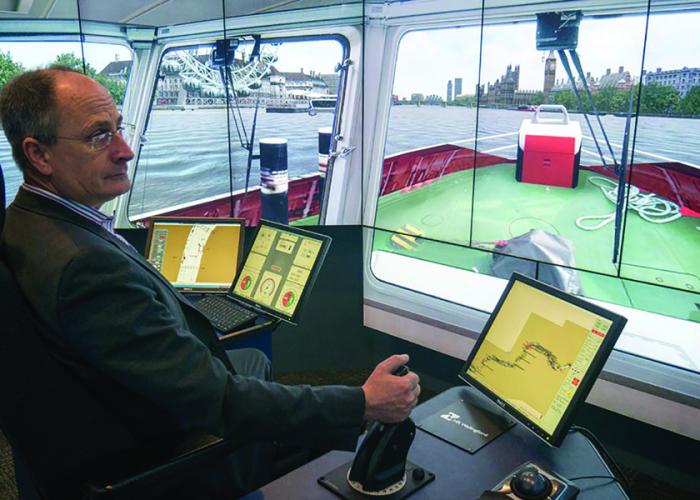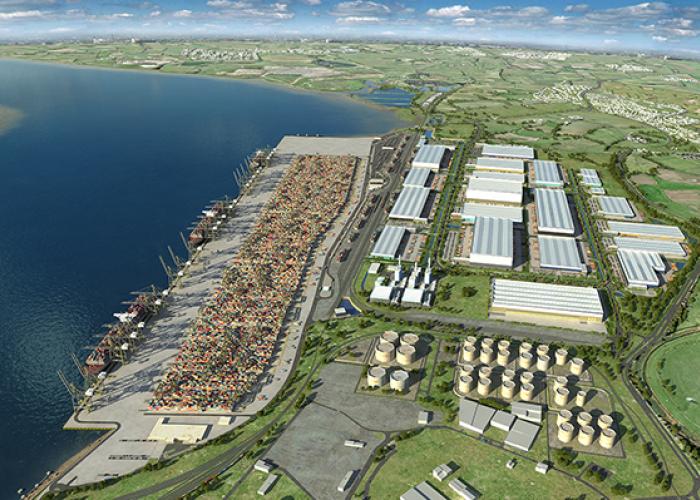
Thames Tideway Tunnel: a super sewer for London
The Thames Tideway Tunnel project will bring London’s sewers into the 21st century, and stop tens of millions of tonnes of untreated sewage flowing into the Thames each year. We helped the Tideway Tunnel team to protect the river environment during the construction and for the design life of the tunnel. We also trained their fleet of vessel masters at our UK Ship Simulation Centre to ensure that they met Tideway’s health and safety standards.
Ensuring safe river navigation
Creating a tunnel 25 kilometres in length, and running up to 65 metres beneath the River Thames, will generate immense volumes of spoil, right in the heart of London. To minimise the impact of transporting this on the capital’s roads, around 4 million tonnes of this material were transported by barge, increasing river traffic by 30 per cent.
A four-day course for boat masters
We developed a four-day course with the Tideway team, designed to ensure boat masters were given the opportunity to demonstrate that they were fully prepared and aware of the health and safety requirements to work on the Tideway Project. The course used our virtual reality simulation of the tidal River Thames, developed using HR Wallingford’s UK Ship Simulation Centre.
“Our simulation covers the tidal River Thames from Putney Bridge to Margaretness, complete with accurate visual scene, tides, flows, other river traffic and changeable weather conditions,” said Dr James Clarke, Technical Director at HR Wallingford. The Thames simulation is the most detailed visualisation we have developed to date. It includes important visual clues, such as lions heads in the river embankments, marker posts, and even details on the undersides of the bridges.
As well as being assessed during normal operations, the vessel masters had to demonstrate how they would respond in unexpected scenarios, examining credible emergency situations in a safe, risk free environment.
I can see that this could become a new standard for regular competency re-evaluation for the Thames rather like that required of airline pilots. It was truly ground breaking stuff and I just have to thank the team who have been behind this over the past couple of years—this is exactly what we mean when we talk about being transformational.

Watch our video on training the Thames Tideway’s fleet of vessel masters
Modelling, monitoring, mitigation
Both the temporary works needed during construction and the permanent final structures will be located on the Thames’ foreshore, potentially changing the way water and sediment moves in the river. We’ve looked at these changes as input to understanding the impact they might have on nearby structures, on river navigability, ecology, as well as being able to inform the design of the structures themselves to minimise these effects.
Future proofing the design
The design life of Thames Tideway Tunnel is 120 years. With the predicted effects of climate change, average sea level and river flows are expected to change over this time, so we‘ve used the validated whole estuary numerical model to simulate the potential extreme currents which might occur over the design life of the tunnel, redefining the extreme or ‘most onerous’ hydrodynamic conditions which the designs will need to be ready for.
Monitoring the effects
The construction of the Thames Tideway Tunnel is split in to three work packages; West, Central and East. Each package includes a number of CSO interception and shaft construction sites.
For the Central area, we are supporting the contractor team – a Ferrovial Agroman and Laing O’Rourke joint venture - to develop and implement a Scour and Accretion Monitoring and Mitigation Plan (SAMMP) for each site of temporary river works. The SAMMP collates the predicted effects of the works on scour and accretion in the river, the understanding of bed level variability and outlines how the river bed level will be monitored during and following the construction of the temporary works. The SAMMP then describes the action that will be taken to mitigate the effects where necessary. The SAMMP is an important document for the construction process and needs to be approved by the relevant regulatory bodies.
The SAMMPs for the Thames Tideway Tunnel are based on an exceptional baseline dataset covering quarterly bathymetric surveys since the end of 2013. The baseline data is key in understanding the natural variability in bed levels which would be expected in a dynamic area such as the tidal Thames and defining appropriate thresholds for any mitigation actions to be triggered.
Want to know more?
Further information

